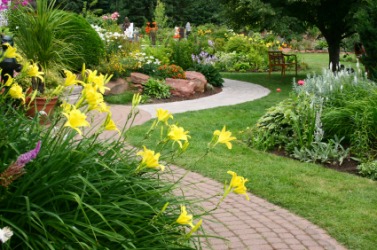Although it's a softwood, hardwood grading criteria apply since eastern red cedar is made use of mainly as a cupboard wood. Since clear timber is hard to come by, many eastern red cedar boards bring the "common" rating label, and also a rather low-cost rate of concerning $1.50 per board foot. Conveniently offered boards rarely surpass 7" sizes, 6' sizes, and 1" thicknesses. Preferred for scent as well as taste French Acadians, deported from Nova Scotia by the British in 1755 to what is currently Louisiana, located an acquainted softwood expanding in their new land. For its red bark and also red timber, they called it baton rouge, meaning "red stick," the name the French settlers taken on for their capital city.
How fast do eastern red cedars grow?
The Red Cedar is not really a Cedar but is actually a juniper. It has a medium growth rate of 12-24” per year with sticky foliage that is a dull green from spring to fall, and in the winter can be green or turn brown or purple.
Sampling Tree Spacing
What can eastern red cedar be used for?
Eastern red cedar is a tree. The wood, berries, and leaves are used for medicine. People take Eastern red cedar for cough, bronchitis, joint pain (rheumatism), water retention, and flatulence. They also take it to improve appetite and digestion, and as a treatment for fungal infections and worms.
Various ranges grown together in masses illuminate questionable areas. Epimedium grandiflora (diocesan's hat) is a low-growing groundcover that can expand well under cedar trees.
How do red cedar trees grow?
Red cedars can also be propagated via cuttings. Cuttings should be taken in late fall, winter or spring when the tree is dormant and the sap has slowed. Try to take the cutting in the early morning. To grow a cedar from a cutting, you will need a http://old.kam-pod.gov.ua/user/brenna8jfq/ 3- to 6-inch piece of current year's growth.
They are gently tinted with either grey or brownish pigments, which mute the all-natural pigmentation in Western Red Cedar, speeding up the weather-beaten look. They are readily available in oil-based as well as latex solutions and also like all finishing products, should be related to all 6 sides of each board. Pay special focus throughout of siding and also trim also raw ends or end cuts, and also make sure to retouch any raw ends with either a skim coat or primer coat.
- The trunk is covered in furrowed reddish-brown bark that transforms grey as the tree matures.
- When squashed, the scaly dark-green leaves have a material gland that yields a fragrant odor.
- It expands between 50 and also 70 feet high with a 25-foot spread in cultivation, but wild trees can get to heights of 200 feet.
- Western red cedar (Thuja plicata) has a natural conical form.
Vitamins & Supplements Facility

Inside the fruit there are 1-4 seeds that are spread out by birds. Male trees have little tan tinted yearn cones, which are the plant pollen bearing body organs of the tree. Plant pollen is released from these small organs at the end of the winter to pollinate the women frameworks.
Convallaria majalis is sturdy in expanding zones 3 through 9. The canopy offers consistent shade and also the upper layers of the soil are filled with roots. Cedar trees develop added issues with their high water demands as well as dense vegetation. Plants growing beneath them frequently suffer from lack of water and also bad light. Perennial plants for dry color must endure little sunlight and also wetness, as well as be adapted to acid dirt created by dropping ground cover.
When you desire the actual look of a little weather-beaten cedar with security, semi-transparent stains are your best bet. The few strong fragments in this mix will not significantly obscure cedar's timber grain.